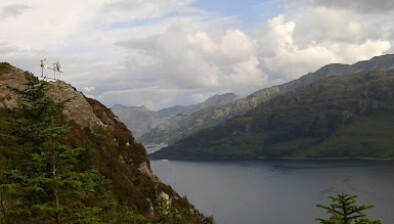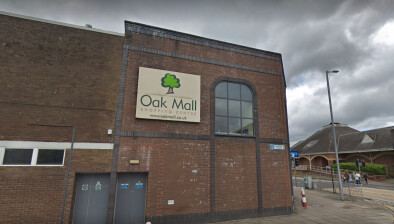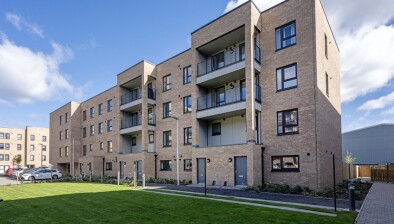Council Tax rates frozen by four more local authorities
 Eleven more local authorities in Scotland have set their respective budgets for the upcoming year, four of which have opted for a voluntary freeze in Council Tax.
Eleven more local authorities in Scotland have set their respective budgets for the upcoming year, four of which have opted for a voluntary freeze in Council Tax.
Aberdeen City Council set its 2017/18 budget and outlined plans for the next phase of its transformation programme.
A budgeted spend of over £1 billion, comprising £295 million capital and £734m revenue expenditure, was approved as councillors agreed to freeze Council Tax rates in the area.
Among the other key recommendations adopted by councillors included an £11m investment towards the regeneration of the city centre – a key part of the council’s City Centre Masterplan.
Officers have been instructed to report to the full council in March on the potential to create 2,000 additional council homes.
Councillor Jenny Laing, leader of Aberdeen City Council, said: “Despite the financial pressure we are under as a local authority, our ambitions for the city have not altered. Maintaining and improving services is a challenge in the light of the savings that we are being forced to make, but it has to remain our goal. The vision for a better and more prosperous city for all cannot falter, regardless of the stark financial realities.
“With that in mind we have been able to support individuals, families and businesses during a period of great economic challenges for the region by freezing council tax rates.”
 North Lanarkshire Council is also to freeze council tax and invest millions of pounds in care for vulnerable people.
North Lanarkshire Council is also to freeze council tax and invest millions of pounds in care for vulnerable people.
The council decided to provide an extra £11m for social care and agreed not to pass on £5.2m of cuts to social care allowed for by the Scottish Government.
The council also reaffirmed its commitment to making no compulsory redundancies as part of its budget.
The council also set rent levels for council tenants, with an increase of 3%, keeping rents in North Lanarkshire among the lowest in Scotland and substantially below the national average. Last year, the council announced NL Homes, the biggest council house building programme in a generation, with more than 2000 homes to be built.
Councillor Jim Logue, leader of North Lanarkshire Council, said: “This small rent increase ensures we can continue with the most ambitious housing programme in the country. Not only that, but it allows us to continue our £250m investment in our existing stock, meaning tenants have modern, efficient and safe homes now and in the future.”
 West Dunbartonshire Council has also frozen Council Tax as it invested in its communities and residents as part of a £212m budget.
West Dunbartonshire Council has also frozen Council Tax as it invested in its communities and residents as part of a £212m budget.
The financial plan for 2017/18 protects frontline services, enhances a number of services by £772,000, and closes the previously reported £421,000 budget gap.
A pilot housing project to provide targeted support for young people aged 16-25 is to be launched, along with a campaign to help those impacted by fuel poverty.
The council also committed to extend its efforts to help residents into work and support the vulnerable, and those hardest hit by welfare reforms including the move to Universal Credit.
Councillors also voted to continue to provide more than £60m funding to the Health and Social Care Partnership to provide seamless care to residents of all ages. This included over £13m for care home service for older peoples, £10m for providing care to people in their own home and £1m to kinship carers.
Council leader Martin Rooney said: “This budget will protect our residents from the burden of a Council Tax rise being introduced in many councils across Scotland. It also transforms our communities by investing in a range of projects in local areas to ensure our residents directly benefit.”
He added: “We also want to do everything we can to tackle deprivation in our communities and support those who are struggling due to welfare reforms.”
 Another authority to maintain its locally agreed Council Tax rate was Stirling Council, where councillors said they wanted to protect the pockets of its residents.
Another authority to maintain its locally agreed Council Tax rate was Stirling Council, where councillors said they wanted to protect the pockets of its residents.
An investment of £1.8m was approved for social care services and £400,000 in Children and Families services to support Stirling’s most vulnerable people and tackle inequality.
Council leader Johanna Boyd said: “This budget aims to protect the vital services Stirling Council provides while ensuring that we also protect the pockets of Stirling’s residents. We are dedicated to improving Stirling’s urban and rural infrastructure and our commitment to fund various capital projects over the coming year will mean that various areas will benefit. Our City Region Deal will also provide a huge boost to both the local and national economy, and over the next 12 months funding will be provided for projects to support this.
“We are only able to deliver this through robust financial management and the tough decisions we have already made through our Priority Based Budgeting (PBB) approach. The savings we are having to make between 2012 and 2022 are £47m. Cuts of this level are not sustainable for us as a council, or any other Scottish local authority.”
 East Ayrshire Council said it opted to increase Council Tax in the region by 3% to help to deliver high quality services to residents whilst maintaining the momentum of its previously announced £500m Capital Investment Programme.
East Ayrshire Council said it opted to increase Council Tax in the region by 3% to help to deliver high quality services to residents whilst maintaining the momentum of its previously announced £500m Capital Investment Programme.
New housing is planned for Hurlford, New Cumnock and Darvel and, by 2021, East Ayrshire is likely to have more than 1,000 newly built council and social rented houses
Council leader Councillor Douglas Reid also outlined a pledge to invest £500,000 to mitigate the worst impact of welfare reform.
He said: “We listened to what people had to say and our budget prioritises investment in people, communities and businesses, helping folk to help themselves through education, regeneration, developing locally led action plans and economic growth.
 Perth & Kinross Council has agreed a £14m budget for 2017/18 which it said reaffirms the council’s continuing commitment to protecting key services and investing to grow the local economy.
Perth & Kinross Council has agreed a £14m budget for 2017/18 which it said reaffirms the council’s continuing commitment to protecting key services and investing to grow the local economy.
Approximately £1.6m of the budget will be raised by a 2% increase in Council Tax for 2017/18.
Among its provision is an increase of £1.4m (2.9%) in the budget for social care, reinstating £300,000 of funding for care at home services.
Councillor Ian Miller, Perth & Kinross Council leader, said: “It is always a challenge in setting the Council budget to strike a balance between protecting services which provide vital supports to our communities and continuing to invest in areas which will allow the economy of Perth and Kinross to grow. However, I believe that in setting this year’s budget we have once again risen to that challenge, and have focussed on areas which are of importance to our communities, good for business, and good for the people we serve.
“Years of careful financial management have allowed us to keep the promises we have made to the people of Perth and Kinross. We have had to make difficult decisions, but have remained true to our core priorities of enhancing the lives of children and young people, supporting families and our communities, and investing in the infrastructure which supports economic growth and makes Perth and Kinross an appealing place for businesses to invest and develop.”
 Argyll & Bute Council has also decided to introduce a 3% increase in Council Tax. Additional Council Tax income will be raised by:
Argyll & Bute Council has also decided to introduce a 3% increase in Council Tax. Additional Council Tax income will be raised by:
Councillors approved an allocation to the Argyll and Bute Health and Social Care Partnership (HSCP) of £54.223m for 2017-18, with indicative allocations of £52.773m for 2018-19 and £51.323m for 2019-20. Additional one-off funding of £2.137m 2017-18 was also agreed, to help the HSCP support transformational change and smoothing the projected budget gap.
Councillor Dick Walsh, leader of the council, said: “People use council services every day. From roads to recruitment services, from schools for our young people to support for our vulnerable residents, council services contribute to everyone’s lives. Our priority in setting this budget has been to protect the services people need, and to continue investing in a prosperous future for the area as a whole.
“We have worked hard to make this possible. We have delivered another £1.4m of efficiency savings this year without impact on communities. We have continued to identify ‘spend to save’ projects, and taken actions suggested by communities, that will make savings in the years to come. We have done all possible to make best use of the funding we have.
“This drive, to overcome challenge through transformation and change, means that we are in a better position than many other councils.”
Council Tax was also raised by 3% by local authorities in Orkney, East Dunbartonshire and Clackmannanshire, while Dundee opted for a 2.5% increase.
Full consideration of the revenue and capital budgets will take place in the coming weeks.
Falkirk Council has also agreed to a 3% increase in Council Tax for 2017/18 amid plans to invest more than £104m in housing across the area in the next three years.
A total of 29 councils have set their rates to date:
Freeze:
2% rise
2.5% rise:
3% rise:
All of Scotland’s 32 local authorities have until March 2 to set their tax and spending plans for the next financial year.








